Abstract: Narrowing the Gap of the Digital Divide – How NSTL contributes
[SESSION 02]
Xiaomu Xu & Ling Leng; National Science Library, Chinese Academy of Sciences (China)
In China, digital divide results from geographical conditions, unbalanced economic development, individual differences, etc. To bridge this gap and weaken the polarization between information wealthy and the poor, a federal library — National Science and Technology Library (NSTL) — based on the Internet has arisen. This paper will introduce what NSTL is and how NSTL contributes to narrowing the gaps in order to reduce differences between the two groups for accessing science and technology information and recourses.
NSTL consists of 9 library members, all of which are national authoritative libraries in different disciplines, respectively covering natural science, engineering, agriculture, medicine, standards, etc. Firstly, to narrow the gap caused by geographical conditions, NSTL has built 40 service stations covering 29 provinces, which have formed a nationwide information service network with the help of local and industrial scientific information institutions. This action not only guarantees resource sharing of the whole country, but also improves service ability of the local. Secondly, to narrow the gap caused by unbalanced economic development, over 25,000 kinds of print resources that are state-funded can be unconditionally supplied for the public with reasonable price. For remote and poor areas, special low price and extra supporting services is much helpful for local researchers. Document delivery services are ordered over 400,000 times every year. Furthermore, nearly 4,000 kinds of electronic journals are free for all domestic welfare and education group users via internet protocol address permissions. Thirdly, to narrow the gap caused by individuals, NSTL provide integrated discovery system on the basis of unified cataloging so that everybody can search literature and find what they want easily. In addition, NSTL also organize trainings and seminars across the country, introducing and promoting resources to all communities, such as colleges, universities, research institutions, even companies, to improve public information literacy.
[Full Text] [Presentation in PDF] [Video]
- Return to conference program
